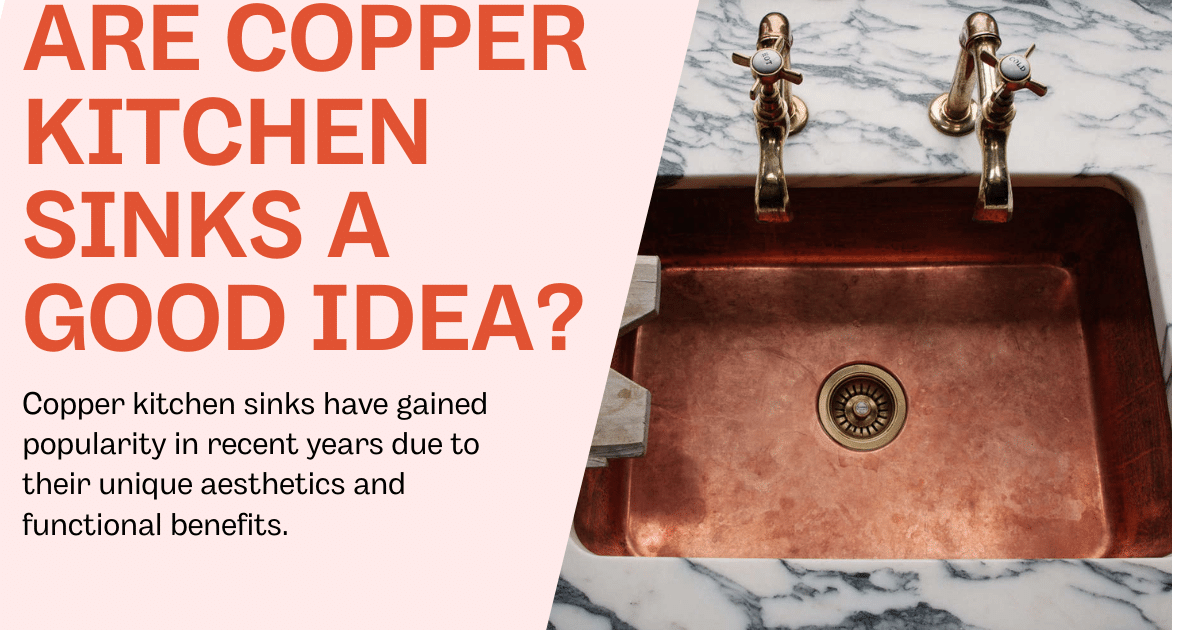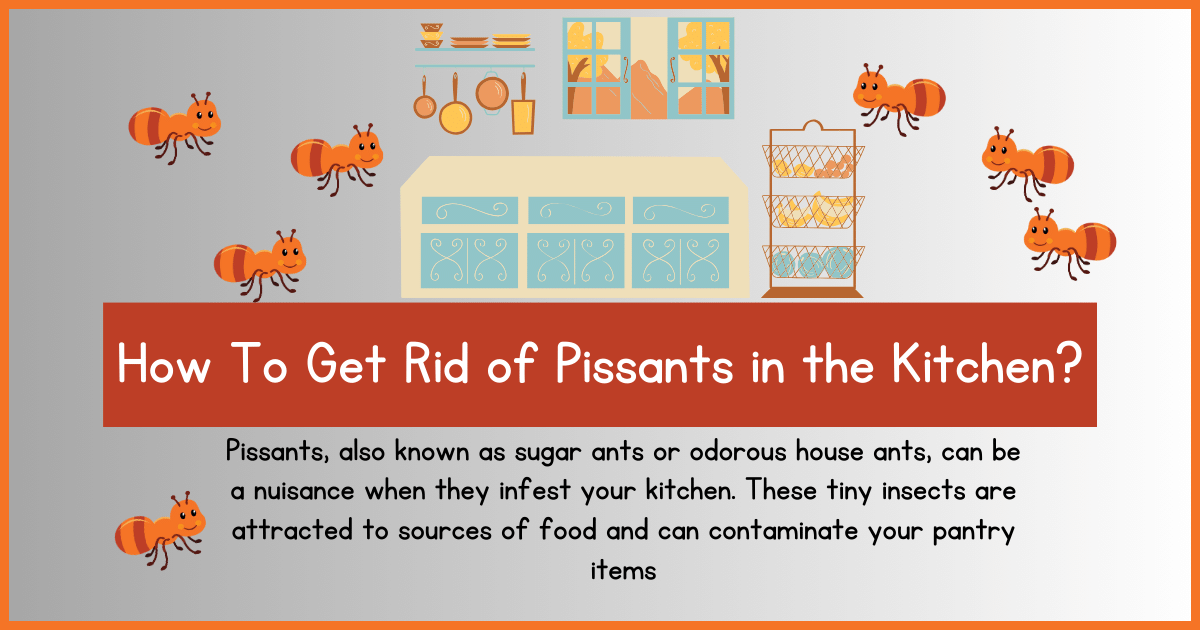When it comes to performing everyday tasks in the kitchen, having adequate water pressure in the sink is essential. However, many homeowners may find themselves dealing with low water pressure issues. Understanding the factors that contribute to low water pressure and identifying the cause is crucial to resolving the problem.
In this article, we will explore the causes of low water pressure in the kitchen sink and provide methods to increase water pressure effectively. We will discuss alternative solutions and precautions to ensure the process is done safely. So, if you’re looking for ways to increase water pressure in your kitchen sink, read on to learn more.
Key takeaway:
- Understanding Water Pressure in the Kitchen Sink: It is important to understand the concept of water pressure in order to identify and address low water pressure issues in the kitchen sink.
- Identifying the Causes of Low Water Pressure: Clogged pipes or faucet aerators, malfunctioning pressure regulators, and water supply issues can all contribute to low water pressure in the kitchen sink.
- Methods to Increase Water Pressure in the Kitchen Sink: Cleaning clogged pipes or faucet aerators, adjusting the pressure regulator, and checking and fixing water supply issues are effective methods to increase water pressure in the kitchen sink.
- Alternative Solutions to Improve Water Pressure: Installing a water pressure booster pump, purchasing a high-pressure kitchen faucet, and investing in a water softening system are alternative solutions that can help improve water pressure in the kitchen sink.
- Precautions and Safety Measures: It is important to take necessary precautions and follow safety measures while addressing low water pressure issues in the kitchen sink.
Understanding Water Pressure in the Kitchen Sink
Understanding water pressure in the kitchen sink is essential for ensuring efficient water flow and a satisfying washing experience. Here are some key factors to consider:
- Pipe size: The diameter of the pipes supplying water to your kitchen sink can significantly impact water pressure. Larger pipes allow for higher water flow, resulting in better pressure. If you notice low water pressure, it may be worth inspecting and potentially upgrading your pipe size.
- Water supply line: The main water supply line coming into your home plays a crucial role in water pressure. If the supply line is old or damaged, it can restrict the flow of water, leading to lower pressure at the kitchen sink. Inspect the supply line for any leaks or blockages that may be affecting pressure.
- Valve positioning: Check the valve that controls the water supply to your kitchen sink. If it is not fully open or partially closed, it can restrict water flow and reduce pressure. Ensure that the valve is fully open to maximize water pressure.
- Aerator condition: The aerator at the end of the faucet spout helps regulate water flow and can affect pressure. Over time, mineral deposits or debris can accumulate in the aerator, blocking the water flow and reducing pressure. Regularly clean and maintain the aerator to ensure optimal water pressure.
- Clogged pipes: If you experience a sudden drop in water pressure in your kitchen sink, it may indicate a clog in the pipes. Build-up of minerals, debris, or even grease can restrict water flow and lower pressure. Consider hiring a professional plumber to inspect and clear any clogs in the pipes.
Understanding water pressure in the kitchen sink is crucial for troubleshooting and improving water pressure, ensuring a smooth and efficient washing experience.
In 1854, Sir George Ohm, a German physicist, formulated Ohm’s Law, which laid the foundation for understanding the relationship between voltage, current, and resistance in electrical circuits.
This law, often expressed as V = IR, helped in the development of water pressure measurement devices.
By applying Ohm’s Law concepts to fluid dynamics, researchers and engineers were able to develop instruments and techniques to accurately measure water pressure in various systems, including kitchen sinks.
This understanding of water pressure has been crucial in ensuring efficient water distribution and optimizing plumbing systems. Today, we benefit from this knowledge as we can diagnose and address water pressure issues in our homes, resulting in improved functionality and convenience in our daily lives.
Identifying the Causes of Low Water Pressure
Low water pressure in the kitchen sink can be frustrating, but before you start troubleshooting, it’s essential to identify the causes. In this section, we will explore three key factors that could contribute to low water pressure.

From clogged pipes or faucet aerators to malfunctioning pressure regulators and water supply issues, we’ll uncover the possible culprits that may be affecting your kitchen’s water pressure. Let’s dive in and uncover the root causes of this common household annoyance.
Clogged Pipes or Faucet Aerators
Clogged pipes or faucet aerators can have a major impact on the water pressure in your kitchen sink. When debris, sediment, or mineral deposits build up in the pipes or aerators, it restricts the flow of water. This restriction leads to lower water pressure, which can be frustrating when trying to complete everyday kitchen tasks.
To address this issue, follow these steps:
- Remove the aerator: Start by unscrewing the aerator from the end of the faucet. If it’s stuck, use a pair of pliers. Carefully examine the aerator for any visible debris or buildup.
- Clean the aerator: Rinse the aerator under running water to get rid of loose debris. Use an old toothbrush to scrub away stubborn deposits. Soaking the aerator in a vinegar solution can help dissolve mineral buildup. Make sure all the holes are clear and not obstructed.
- Check the pipes: If cleaning the aerator doesn’t improve the water pressure, the blockage may be in the pipes. Turn off the water supply to the sink and then disconnect the pipes with a wrench. Check for any visible clogs or buildup and remove them using a pipe brush or plumber’s snake.
- Reassemble and test: Once the aerator and pipes are clean, put everything back together and turn on the water supply. Check if the water pressure has improved. If not, you may need to consult a professional plumber for further investigation.
In a real-life scenario, Sarah had been experiencing low water pressure in her kitchen sink for weeks. Frustrated, she decided to handle the problem herself. Sarah followed the steps above and found a significant buildup of debris in the aerator. After cleaning it thoroughly, she reassembled everything and turned on the water. To her relief, the water pressure was restored, and she could easily perform various kitchen tasks without any issues.
Remember, regular maintenance and cleaning of your pipes and faucet aerators can prevent clogs and ensure optimal water pressure in your kitchen sink.
Malfunctioning Pressure Regulator
A malfunctioning pressure regulator can have a significant impact on the water pressure in your kitchen sink. It is important to address this issue promptly to avoid further damage to your plumbing system and restore optimal water pressure. Here are some key points to consider:
- The pressure regulator is a device that controls the water pressure entering your home, ensuring it remains at a safe and consistent level.
- When the pressure regulator malfunctions, it can result in low water pressure in the kitchen sink, making tasks like washing dishes or filling pots with water frustrating and time-consuming.
- Signs of a malfunctioning pressure regulator include inconsistent water pressure throughout the house, water hammer noises, and sudden changes in water pressure.
- To fix a malfunctioning pressure regulator, hiring a professional plumber may be necessary. They can assess the problem and make the required repairs or replacements.
- In some cases, the malfunctioning pressure regulator may need to be completely replaced. Although this can be more expensive, it often provides a long-term solution.
- Regular maintenance and inspections can help prevent issues with the pressure regulator. It is advisable to have a professional inspect your plumbing system on a regular basis to find and fix any potential issues.
- Understanding the warranty and lifespan of your pressure regulator can help you anticipate when repairs or replacements may be needed.
- Taking prompt action when you notice signs of a malfunctioning pressure regulator can save you from inconveniences and costly repairs in the future.
- Keep in mind that the specific steps to address a malfunctioning pressure regulator may vary depending on the type and model of your plumbing system.
Addressing a malfunctioning pressure regulator is crucial for ensuring proper water pressure in your kitchen sink. Seeking professional assistance will help you effectively identify and resolve the issue.
Water Supply Issues
Water supply issues can have a significant impact on the water pressure in your kitchen sink. It is crucial to address and understand these issues in order to maintain a steady flow of water. Here are some common problems that can cause low water pressure:
- Obstructed Pipes: Over time, mineral deposits, debris, or rust can build up in the pipes, resulting in blockages. These blockages restrict the flow of water and lead to low water pressure. Regular maintenance and cleaning of the pipes can help prevent this issue.
- Leaks or Damage: Any leaks or damage in the water supply pipes can result in a loss of water pressure. Even minor leaks can have a significant impact on the overall flow of water. It is important to inspect the pipes regularly for any signs of leaks or damage and repair them promptly.
- Water Line Issues: Sometimes, issues with the main water line can cause water supply problems. A broken water main or a decrease in water pressure from the municipal supply can affect the water pressure in your kitchen sink. Contacting the water utility company can help identify and resolve these issues.
- Water Meter or Pressure Regulator Problems: Faulty or malfunctioning water meters or pressure regulators can disrupt the water flow and lead to low water pressure. Regular inspection and maintenance of these components are essential to ensuring optimal water pressure.
- Inadequate Water Supply: If the water supply to your home is not sufficient, it can result in low water pressure in the kitchen sink. This can happen when multiple appliances or fixtures are being used simultaneously, depleting the available water supply. Installing a larger water storage tank or upgrading the water supply system can help alleviate this issue.
In order to improve water pressure in your kitchen sink and address water supply issues, it is important to identify the underlying cause and take appropriate actions. For complex issues, consulting a professional plumber may be necessary. By resolving these water supply issues, you can ensure a consistent and adequate flow of water in your kitchen sink.
Methods to Increase Water Pressure in the Kitchen Sink
When it comes to improving the water pressure in your kitchen sink, there are a few methods worth exploring. We’ll dive into some effective techniques that can make a significant difference. From clearing clogged pipes or faucet aerators to adjusting the pressure regulator, we’ve got you covered.

We’ll also address any potential water supply issues that might be hindering your water pressure. Say goodbye to low water pressure woes and get ready to enjoy a steady flow in your kitchen sink.
Clean Clogged Pipes or Faucet Aerators
To clean clogged pipes or faucet aerators in your kitchen sink, follow these steps:
- Turn off the water supply: Before starting any cleaning, make sure to turn off the water supply to your kitchen sink. This will prevent any water from flowing while you work.
- Remove the aerator: Use a pair of pliers to unscrew the aerator from the faucet. Be careful not to damage the aerator or the faucet while doing this.
- Inspect the aerator: Once the aerator is removed, examine it closely for any signs of debris or mineral buildup. This could include small particles or hard water deposits.
- Clean the aerator: Gently rinse the aerator under running water to remove any loose debris. If there are stubborn deposits, you can soak the aerator in a vinegar solution for about 30 minutes to help dissolve them.
- Scrub the aerator: Use a small brush or toothbrush to scrub the aerator, focusing on any areas with buildup. Be thorough but gentle to avoid damaging the aerator.
- Rinse and reassemble: Rinse the aerator thoroughly to remove any remaining debris or vinegar solution. Once clean, reassemble the aerator by screwing it back onto the faucet.
- Turn on the water supply: After completing the cleaning, turn on the water supply to your kitchen sink and check if the water pressure has improved.
One day, Julia noticed that the water pressure in her kitchen sink had significantly decreased. Frustrated with the weak flow, she decided to take matters into her own hands and clean the clogged pipes or faucet aerators. Following the steps outlined above, Julia carefully turned off the water supply, removed the aerator, and inspected it for any debris. To her surprise, she found small particles and mineral buildup clogging the aerator.
With determination, she cleaned the aerator using a vinegar solution and a toothbrush. After a thorough rinse and reassembly, Susan turned on the water supply again. To her delight, the water pressure had greatly improved! Susan learned the importance of regular maintenance and the satisfaction that comes from solving household issues on her own.
Adjust the Pressure Regulator
Adjusting the pressure regulator in your kitchen sink can help improve water pressure. Follow these steps to adjust the pressure regulator:
- Locate the pressure regulator. It is usually located near the water meter or where the main water supply enters your home.
- Turn off the water supply. Locate the shut-off valve near the pressure regulator and turn it clockwise to shut off the water.
- Use a wrench to loosen the lock nut on the pressure regulator. Turn it counterclockwise to loosen it.
- Turn the adjustment screw clockwise to increase the water pressure. Start with small adjustments and test the water pressure after each adjustment.
- Once you have achieved the desired water pressure, tighten the lock nut by turning it clockwise with a wrench.
- Turn on the water supply by turning the shut-off valve counterclockwise.
Fact: Adjusting the pressure regulator can help ensure a consistent and adequate flow of water in your kitchen sink.
Check and Fix Water Supply Issues
When it comes to dealing with low water pressure in your kitchen sink, it is important to check and address water supply issues to resolve the problem. Here are some steps to help you effectively check and fix these issues:
- Check and fix the main water valve: Start by locating the main water valve in your house and making sure it is fully open. If it is partially closed, it can restrict water flow and result in low pressure in your kitchen sink.
- Inspect and address the water pressure regulator: The water pressure regulator is responsible for regulating the water pressure entering your house. Check if it is functioning properly. If it is faulty or malfunctioning, it may be the cause of low water pressure. In such cases, consider fixing or replacing it.
- Examine for any leaks or blockages and take the necessary measures: Inspect your plumbing pipes for any leaks or blockages. Leaks can cause a decrease in water pressure, while blockages can completely restrict water flow. If you find any leaks, fix them promptly. Similarly, clear any blockages to restore proper water pressure.
- Check for signs of pipe corrosion and take appropriate action: Over time, pipes can corrode, leading to reduced water pressure. Look for any signs of corrosion, such as discoloration or rust. If you notice any corrosion, replace the affected pipes to improve water pressure.
- Ensure adequate pipe size: Verify that the pipes supplying water to your kitchen sink are the correct size. Inadequate pipe size can result in pressure loss. If you are unsure about the size, consult a professional plumber to determine if resizing your pipes is necessary.
- Consider the water supply line: The diameter of the water supply line can also impact water pressure. If the line is too small, it can restrict the flow of water. Upgrading to a larger diameter supply line can help improve water pressure.
- Check for any municipal water issues: In some cases, water supply issues might be beyond your control. If you suspect this to be the case, contact your local water utility company to inquire about any known issues or maintenance work that could be affecting the water supply in your area.
By following these steps and addressing any water supply issues, you can effectively check and fix low water pressure problems in your kitchen sink.
Alternative Solutions to Improve Water Pressure
Looking to boost your kitchen sink’s water pressure? Look no further! In this section, we’ll explore alternative solutions that can help improve your water pressure. From installing a water pressure booster pump to investing in a water softening system, we’ve got you covered.

Say goodbye to weak water flow and hello to stronger pressure for all your kitchen needs. Let’s dive in and discover the best options for increasing water pressure in your kitchen sink!
Install a Water Pressure Booster Pump
Installing a water pressure booster pump can greatly improve the water pressure in your kitchen sink. To help you through the process, here is a step-by-step guide:
- Begin by shutting off the main water supply to your home. This is crucial for ensuring safety during the installation process.
- Locate the main water line where it enters your home, usually near the water meter.
- Install a water pressure gauge near the entry point of the main water line. This gauge will allow you to monitor the water pressure in your system.
- Next, properly install the water pressure booster pump on the main water line, following the manufacturer’s instructions.
- Connect the booster pump to a dedicated power source. Having a separate electrical circuit for the pump ensures reliable operation.
- Now, turn on the main water supply and observe the water pressure gauge. As the booster pump starts working, you should see an increase in water pressure.
- Adjust the pressure settings on the booster pump if needed. Some pumps allow customization of the desired water pressure level.
- Check the system for any leaks or malfunctions, ensuring that all connections are secure and tight.
- Once you have confirmed that the booster pump is functioning properly, you can turn on the faucet in your kitchen sink and enjoy the improved water pressure.
Installing a water pressure booster pump can significantly enhance the water pressure in your kitchen sink. This improvement will provide you with better flow and efficiency for various tasks, such as washing dishes and filling pots. If you are not familiar with plumbing installations or encounter difficulties during the process, it is advisable to consult a professional. With a properly installed booster pump, you can enjoy a more powerful and reliable water supply in your kitchen.
Purchase a High-Pressure Kitchen Faucet
When it comes to increasing water pressure in your kitchen sink, one effective solution is to purchase a high-pressure kitchen faucet. This can help improve the overall water flow and provide a better experience while using the sink.
- Enhanced water flow: A high-pressure kitchen faucet is specifically designed to optimize water flow. It has features that help increase the pressure, allowing for a more powerful stream of water.
- Improved efficiency: With a high-pressure kitchen faucet, you can accomplish your tasks more quickly and efficiently. The increased water pressure facilitates tasks like washing dishes, rinsing vegetables, and filling pots in a shorter amount of time.
- Better cleaning performance is possible thanks to the higher water pressure that a high-pressure kitchen faucet provides. It can help remove stubborn grease and food particles more effectively, ensuring a cleaner and more hygienic kitchen.
- Customizable features: High-pressure kitchen faucets often come with adjustable settings that allow you to control the water flow and pressure according to your needs. This customization feature ensures you can achieve the desired pressure for different tasks.
- Longevity: Investing in a high-quality, high-pressure kitchen faucet ensures its durability and longevity. You can rely on its performance for an extended period without worrying about frequent repairs or replacements.
When purchasing a high-pressure kitchen faucet, consider factors such as the material, design, and functionality that suit your preferences and kitchen decor. Look for reputable brands known for their quality and performance.
Remember to follow the manufacturer’s instructions for installation and maintenance to ensure optimal functionality. Regularly clean and maintain the faucet to prevent any blockages or issues that may affect water pressure.
By purchasing a high-pressure kitchen faucet, you can enhance your kitchen sink’s water pressure, making daily tasks more efficient and enjoyable.
Invest in a Water Softening System
If you’re looking to improve water pressure in your kitchen sink, investing in a water softening system can be a great solution. Here are some reasons why you should consider it:
- Eliminates mineral buildup: By removing high levels of minerals like calcium and magnesium, a water softening system prevents clogs and improves water flow, enhancing water pressure in your kitchen sink.
- Reduces scale formation: With a water softening system, you can prevent the formation of scale on fixtures and pipes, which can restrict water flow and decrease pressure.
- extends the lifespan of appliances: Purchasing a water softening system not only increases water pressure but also shields your kitchen appliances from harm due to mineral buildup. This results in longer-lasting and more efficient appliances.
- Improves water quality: In addition to removing minerals, water softening systems reduce impurities such as chlorine and sediment, resulting in improved water quality for cooking and drinking and improved taste.
- Saves on maintenance and repairs: By avoiding costly repairs and plumbing maintenance, a water softening system can help prevent pipe corrosion, leakages, and other plumbing issues that can impact water pressure.
When selecting a water softening system, consider your specific needs, budget, household size, water hardness in your area, and maintenance requirements. Consulting with a professional is crucial to ensuring proper installation and ongoing maintenance.
By investing in a water softening system, you can significantly improve the water pressure in your kitchen sink while enjoying the various other benefits it offers. Say goodbye to low water pressure and experience the convenience of a smoothly running kitchen sink.
Precautions and Safety Measures
When attempting to increase water pressure in your kitchen sink, it’s important to take certain precautions and safety measures to ensure a successful and safe outcome. Follow these steps:
- Before starting any work, turn off the main water supply to your house. This will prevent any accidents or water leakage while you’re making adjustments.
- Wear protective gear, such as safety goggles and gloves, to protect yourself from any potential hazards during the process.
- Check for any existing plumbing issues or leaks in your pipes, valves, or faucets. Repair any issues before attempting to increase the water pressure.
- Inspect the pressure regulator, which is usually located near the main water supply. If the regulator is faulty or has become clogged, it may be limiting the water pressure. Clean or replace the regulator if necessary.
- Install a pressure booster pump if you find that the pressure from the main water supply is insufficient. These pumps can increase water pressure and provide a stronger flow to your kitchen sink.
- Ensure that all connections and fittings are secure and tight. Loose connections can lead to water leakage or pressure fluctuations.
- Open all the faucets in your house, including the kitchen sink, and slowly turn on the main water supply. This will help flush out any air or debris from the pipes and ensure proper water flow.
- Gradually adjust the pressure regulator or pressure booster pump to increase the water pressure to your desired level. Be cautious not to exceed the recommended pressure for your system.
Remember, it’s important to prioritize safety when working with plumbing systems. If you’re unsure about any of the steps or encounter any difficulties, it’s recommended to consult a professional plumber to assist with the process.
Fact: Did you know that low water pressure can be caused by issues such as clogged pipes, valve obstructions, or inadequate pressure from the main water supply? Taking the necessary precautions and safety measures can help you identify and resolve these issues effectively.
Some Basic Facts :
- ✅ Low water pressure in the kitchen sink can be frustrating and make washing dishes difficult. (Source: spadonehome.com)
- ✅ Calling a plumber is the most logical option to fix the problem, but it can be expensive. (Source: spadonehome.com)
- ✅ One possible solution is to check the shut-off valve underneath the sink and make sure it is working properly. (Source: spadonehome.com)
- ✅ Clogged aerators can also cause low water pressure, so removing and cleaning them can help restore water pressure. (Source: wikihow.com)
- ✅ The pressure valve in the house or near the main water supply line can be adjusted to increase water pressure. (Source: wikihow.com)






